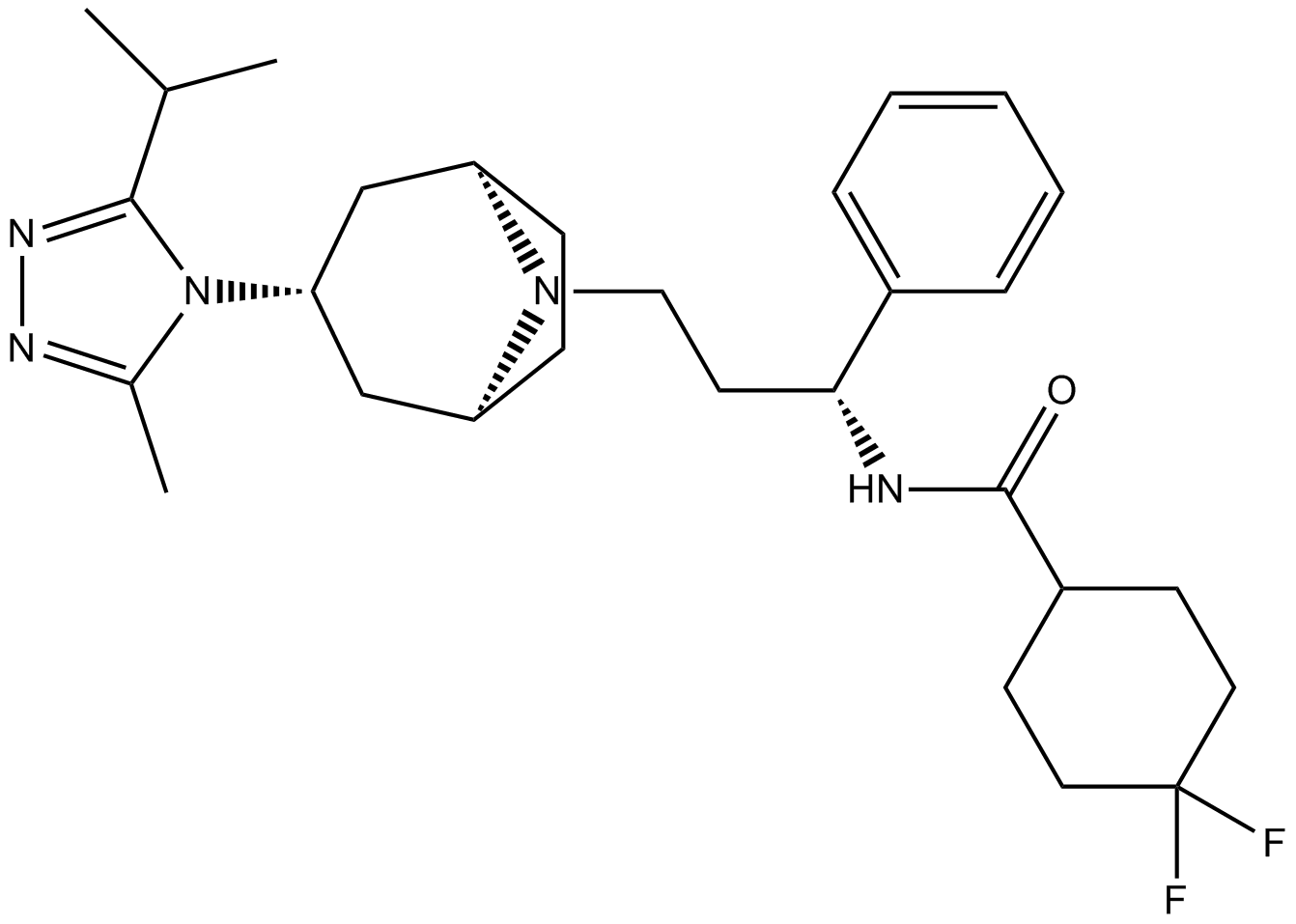Maraviroc (Synonyms: UK-427857; Selzentry; Celsentri) |
| Katalog-Nr.GC15090 |
Maraviroc (UK-427857) ist ein selektiver CCR5-Antagonist mit AktivitÄt gegen menschliches HIV.
Products are for research use only. Not for human use. We do not sell to patients.

Cas No.: 376348-65-1
Sample solution is provided at 25 µL, 10mM.
Maraviroc, the first CCR5 antagonist, has been approved for the treatment of HIV infection, IC50 on hERG ion channel>10μM[1]. Maraviroc also has been viewed as a new therapeutic strategy to treat neuroinflammatory diseases such as multiple sclerosis, Rasmussen encephalitis [2].
Maraviro (3µg/ml for 48 hours) could regulate the release of pro-inflammatory factors related to liver fibrosis in LX-2 cells (a human hepatic stellate cell line). These pro-inflammatory factors led to an increase in the expression levels of cyclin D1 and p21, while the expression of p53 decreases, thereby blocking cell growth in the S phase. Therefore, maraviro may play an important role in the treatment of liver fibrosis[3].
Maraviroc (20mg/kg for 3 days) significantly enhanced tissue preservation and improved neurological function in traumatic brain injury (TBI) mice[4]. Maraviroc treatment (120mg/kg, 200μl, twice/day) also significantly reduced blood and brain viral loads and reduced HIV induced increase in amyloid-beta (Aβ)-42, gamma-secretase activating protein (GSAP), and phospho-Tau in NOD/scid–IL-2Rγc null (NSG) mice, thereby reducing viremia, preserving the BBB and neurons, increasing brain Aβ efflux, and reducing AD-like neuropathologies[5].
[1] Dorr P, Westby M, Dobbs S, Griffin P, Irvine B, Macartney M, et al. Maraviroc (UK-427,857), a potent, orally bioavailable, and selective small-molecule inhibitor of chemokine receptor CCR5 with broad-spectrum anti-human immunodeficiency virus type 1 activity. Antimicrob Agents Chemother. 2005;49(11):4721-32. doi: 10.1128/aac.49.11.4721-4732.2005. PubMed PMID: 16251317.
[2] Martin-Blondel G, Brassat D, Bauer J, Lassmann H, Liblau RS. CCR5 blockade for neuroinflammatory diseases--beyond control of HIV. Nat Rev Neurol. 2016;12(2):95-105. Epub 20160118. doi: 10.1038/nrneurol.2015.248. PubMed PMID: 26782333.
[3] Coppola N, Perna A, Lucariello A, Martini S, Macera M, Carleo MA, et al. Effects of treatment with Maraviroc a CCR5 inhibitor on a human hepatic stellate cell line. J Cell Physiol. 2018;233(8):6224-31. Epub 20180312. doi: 10.1002/jcp.26485. PubMed PMID: 29336497.
[4] Liu XL, Sun DD, Zheng MT, Li XT, Niu HH, Zhang L, et al. Maraviroc promotes recovery from traumatic brain injury in mice by suppression of neuroinflammation and activation of neurotoxic reactive astrocytes. Neural Regen Res. 2023;18(1):141-9. doi:10.4103/1673-5374.344829. PubMed PMID: 35799534.
[5] Bhargavan B, Woollard SM, McMillan JE, Kanmogne GD. CCR5 antagonist reduces HIV-induced amyloidogenesis, tau pathology, neurodegeneration, and blood-brain barrier alterations in HIV-infected hu-PBL-NSG mice. Mol Neurodegener. 2021;16(1):78. Epub 20211122. doi: 10.1186/s13024-021-00500-0. PubMed PMID: 34809709.
Average Rating: 5 (Based on Reviews and 4 reference(s) in Google Scholar.)
GLPBIO products are for RESEARCH USE ONLY. Please make sure your review or question is research based.
Required fields are marked with *




















